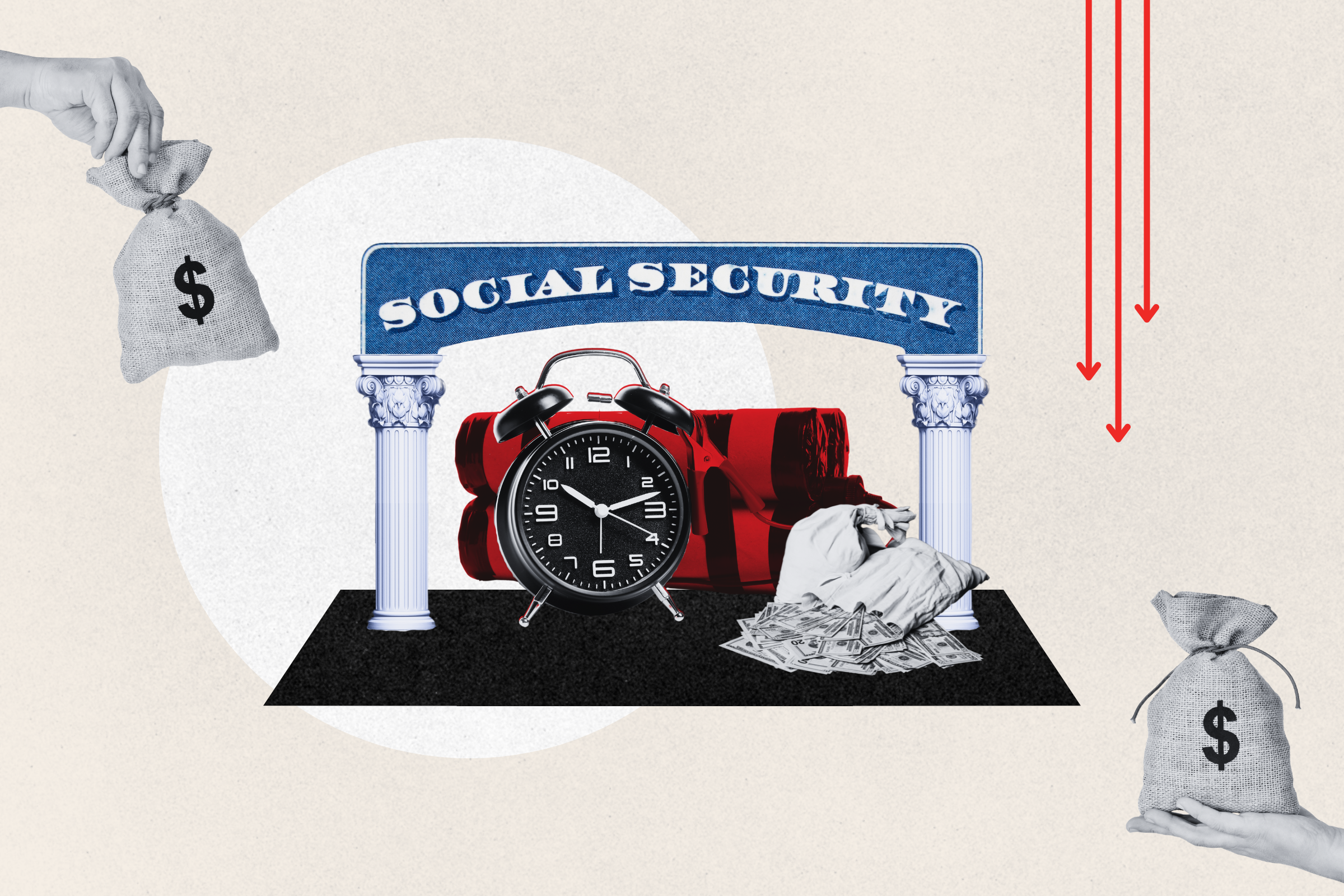The Social Security Administration (SSA) is facing a grave insolvency threat as more Americans begin claiming their government funded retirement benefits as millions of beneficiaries could face monumental cuts if action is not taken.
Social Security forms the bedrock on which millions of Americans fund their retirement plans.
In 2022, the SSA paid out retirement, survivor and disability benefits to 70.6 million beneficiaries in the U.S. Funded by a combination of taxes and government reserve funds, Social Security is by far the largest direct expense of the U.S. government’s annual budget, amounting to $1.3 trillion, or five percent of the 2023 GDP.
But despite being a hugely popular program of significant importance, the agency faces paying out more than ever due to an aging population. Coupled with a widely noted funding cliff that, if not resolved, could see benefits cut by a quarter in the next decade, the SSA faces multiple challenges in the coming years.
Photo-illustration by Newsweek/Getty
America’s aging population is the top contributing factor to the SSA’s problems—and the evidence cannot be ignored. In fact, the call has been coming from within since the mid 2000s, when the SSA published its own report looking into America’s aging population and its own ability to keep paying benefits at its current levels.
According to the government agency, in 2005, 12 percent of the total population was aged 65 or older, “but by 2080, it will be 23 percent.” In its 2023 Trustees Report, the government agency reiterated the facts: “the number of retired workers will grow rapidly, as members of the post–World War II baby boom continue to retire in increasing numbers. The number of retired workers is projected to double in about 50 years. People are also living longer, and the birth rate is low.”
More recently, a January 2024 report by the Congressional Budget Office (CBO) found that this year, the ratio of people ages 25-64 to people age 65 or older will be 2.9 to 1. By 2054, it will be 2.2 to 1. To put a fine point on the matter, fewer taxpayers’ equal less revenue to fund retirement benefits.
“The Baby Boomers have been crossing the age of 65 for 15 years now and the first of that generation starts turning 80 in 2025. They are living longer into retirement than Social Security was designed to be able to support,” Chris Orestis, president of Retirement Genius, told Newsweek.
“Historically it has required about two workers to support one retiree on Social Security, but the ratio has been disrupted and the fiscal strength of the program is being undermined.”
“Life expectancy and health span is longer today than when Social Security was first introduced,” Stephen Kates, principal financial analyst for Annuity.org, told Newsweek. “Additionally, there are far fewer working individuals for each Social Security recipient.”
How did we get here?
In 2021, the SSA began dipping into its financial reserves—two trust funds valued at $2.9 trillion in 2021. Both are currently projected by the SSA itself to be completely depleted by around 2033. This is not entirely due to changes in age demographics across America, with other factors playing a role, including taxpayer contributions not being reserved for future payouts.
But, by 2033, with the number of Baby Boomers leaving the workforce each year continuing to grow, coupled with the number of working age Americans becoming stagnant, the trust fund is under threat of running completely dry. As a result, tax receipts will only be able to fund between 75 and 80 percent of the current payment levels.
Changes to the age demographics of the U.S. population are nothing new. “Because the Baby Boomers are a big generation, followed by smaller generations, it means that for any given payroll tax, there’s not enough revenue to pay the benefits,” Louise Sheiner, an economist with the Brooking’s Institute, told the Harvard Gazette. “It’s not coming from the fact that Social Security benefits have gotten really generous. It’s really a structural change in the economy that makes [Social Security] difficult to sustain.”
Demographic changes in terms of age are not the only contributing factor to the SSA’s problems. “The shifting nature of the work world, with not everyone being employed in the traditional sense, such as gig economy workers and people moving from job to job or in and out of unemployment, and the payroll taxes needed to fund Social Security are not keeping up with the demand,” Kates explained.
What will happen to Social Security?
While current predictions about the social program may seem grim, retirement and financial experts are not without hope when it comes to fixing the mounting issues.
Expert bodies like the American Academy of Actuaries have offered numerous proposals that they say could help the SSA with its problem, including a combination of tax increases and benefit cuts.
“Right now, there is about 10 years to fix the problem,” Burt Williamson, a retirement specialist with PlanPrep, told Newsweek. He predicts that “history will repeat itself,” drawing on a similar situation in the early 1980s in which a bipartisan commission set up by President Ronald Reagan delivered plans to shore up the SSA’s solvency well into the 21st century—albeit only just within the nick of time.
“Fast forward into the future, this time to 2031 or 2032, and the president at that time likely will have to appoint a new commission—history repeating itself—to come up with new findings that will give Congress another way to avoid blame for the changes that will be made,” Williamson said.
The problem faces significant pressure to be solved, given Social Security’s enduring popularity with voters on both sides of a political spectrum. “That’s the only way I believe any major solutions are ever going to take place for Social Security. ‘We are going to cut the benefits of 80 million American voters’ would not be a very good campaign slogan for anyone who wants to get reelected,” Williamson said.
“One of the biggest factors in how retirement and Social Security will be handled will be the growing political power of those over 65,” Kates agreed. “Those over 65 are consistently considered to be the most likely to vote and it is expected that their share of the population will exceed 20 percent in the next two decades and peak at 23 percent by 2050. This voting block will have tremendous sway on lawmakers to maintain the benefits they have paid into and expect to use.”
“While it isn’t clear what methods will be used, Social Security won’t be brushed aside easily,” Kates said.
Are you under 65 and worried about your future Social Security payments? Email [email protected].
Uncommon Knowledge
Newsweek is committed to challenging conventional wisdom and finding connections in the search for common ground.
Newsweek is committed to challenging conventional wisdom and finding connections in the search for common ground.















